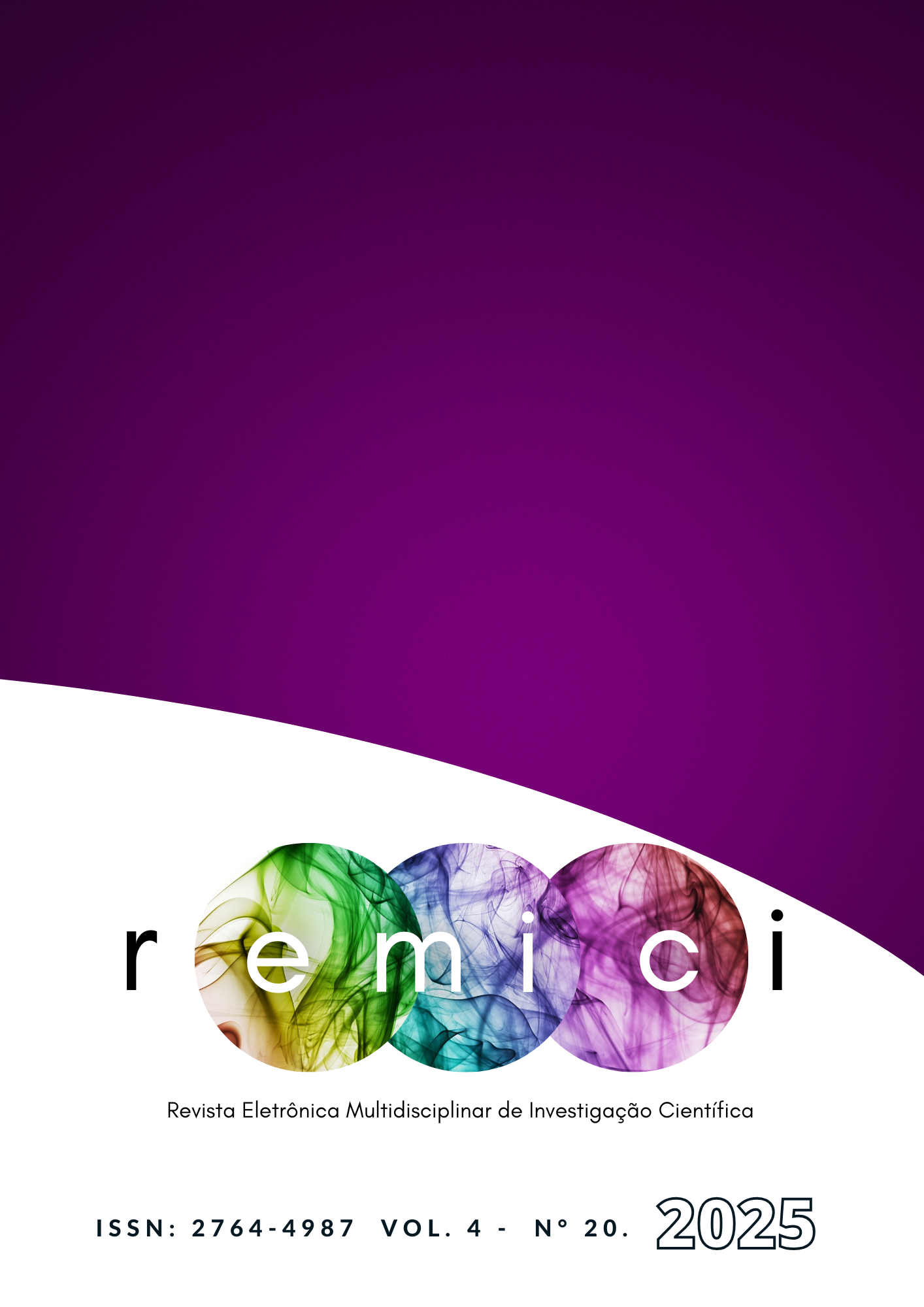Chemical Attributes and Soil Organic Carbon in Coffee Plantations and Different Land Uses in the Mogiana Region of São Paulo
Main Article Content
Abstract
Brazilian coffee production plays a key role in agribusiness. Brazil is the world’s largest producer, exporter, and consumer of coffee. The objectives of this research were to evaluate the components of soil acidity (pH, Al, H + Al, and m%), nutrients (available P and K, exchangeable Ca and Mg), fertility indicators (SB, T, t, and V%), and soil organic carbon (SOC) content in coffee plantations and other land uses (pasture and native forest) in the Mogiana region of São Paulo state. The study area is located in the municipality of São José do Rio Pardo, SP. The experimental design used randomized blocks, in a 4 x 2 factorial scheme, with four land uses (coffee in the planting row position, coffee in the inter-row position, pasture, and native vegetation) and two sampling depths (0-20 cm and 20-40 cm), with four replicates. To evaluate the results, the soil under native vegetation was considered the control. The granulometric composition of the soil, soil acidity and its indicators (pH, H+Al, Al, m%), soil nutrients (K, Ca, Mg, and P), and soil fertility parameters (SB, T, t, and V%) as well as SOC levels were evaluated. Soil texture was classified as medium in all areas and depths analyzed, which allowed comparisons between the different land uses. Native vegetation presented the best soil fertility indicators, with high levels of nutrients, SOC, and parameters such as suns of bases and cation exchange capacity, while areas under agricultural use and pasture exhibited nutritional limitations and lower carbon accumulation, especially in the surface layer (0-20 cm). Due to the high export of nutrients and inconvenient management practices, coffee plants showed lower fertility, especially in the inter-row. These results reinforce the need for sustainable management practices, such as organic fertilization, soil cover, and planning, to preserve soil health, increase efficiency in carbon accumulation, and ensure long-term productive sustainability through the building of soil fertility.
Article Details

This work is licensed under a Creative Commons Attribution-NonCommercial-ShareAlike 4.0 International License.
References
AGUIAR, A. T. E. et al. Boletim 200: instruções agrícolas para as principais culturas econômicas. 7.ª Ed. rev. e atual. Campinas: Instituto Agronômico, 2014. 452 p. (Boletim IAC, n.º 200). Disponível em: https://www.iac.sp.gov.br/publicacoes/publicacoes/iacboletim200.pdf. Acessado em: Jan. 2025.
CARAMORI, P. H.; ANDROCIOLI FILHO, A.; BAGGIO, A. Arborização do cafezal com Grevilea robusta no Norte do estado do Paraná. Arquivos de Biologia e Tecnologia, Curitiba, v. 38, n. 4, p. 1031-1037, 1995. Disponível em: https://www.alice.cnptia.embrapa.br/alice/bitstream/doc/303440/-1/SP3874.pdf. Acessado em: Jan. 2025.
CONSELHO DOS EXPORTADORES DE CAFÉ DO BRASIL (CECAFE). Cafeicultura. Disponível em: http://www.cecafe.com.br. Acessado em: Jan. 2025.
COMPANHIA NACIONAL DE ABASTECIMENTO (CONAB). Safra de café. 2014. Disponível em: https://www.conab.gov.br/info-agro/safras/cafe. Acessado em: Jan. 2025.
COGO, F. D. et al. Atributos físicos y contenido total de carbono orgánico del suelo a diferentes profundidades bajo el cultivo de banano. HOLOS, Ano 39, v.3, p.1-16, 2023. Disponível em https://www2.ifrn.edu.br/ojs/index.php/HOLOS/article/view/10025/3667. Acessado em: Jan. 2025.
COGO, F. D. Carbono orgânico em Latossolo sob lavoura cafeeira e outros usos da terra no sul de MG. 2012. 85p. Dissertação (Mestrado em Ciência do Solo) – Universidade Federal de Lavras, Lavras, 2012. Disponível em: http://www.sbicafe.ufv.br/bitstream/handle/123456789/6802/Diss-ertacao_Franciane%20Diniz%20Cogo.pdf?sequence=1&isAllowed=y. Acessado em: Jan. 2025.
DAY, P. R. Particle fractionation and particle size analysis. In: Methods of soil analysis. Part 1. Madison: American Society of Agronomy, 1965, p.545-566. Disponível em: https://acsess.onlinelibrary.wiley.com/doi/abs/10.2134/agronmonogr9.1.c43. Acessado em: Jan. 2025.
EMPRESA BRASILEIRA DE PESQUISA AGROPECUÁRIA - EMBRAPA. Manual de métodos de análise de solo, plantas e fertilizantes. 3. ed. Brasília: Embrapa Informações Tecnológicas, 627 p. 2009. Disponível em: https://www.infoteca.cnptia.embrapa.br/infoteca/handle/doc/330496. Acessado em: Jan. 2025.
FERREIRA, D. F. Sisvar 5.0: sistema de análises estatísticas. Lavras: UFLA, 2011. Disponível em: https://des.ufla.br/~danielff/sisvar.html. Acessado em: Jan. 2025.
IAC (Instituto Agronômico de Campinas). O café no Brasil. Campinas, SP: IAC, 2007. Disponível em: https://www.iac.sp.gov.br/media/publicacoes/iacdoc34.pdf. Acessado em: Jan. 2025.
JAGADAMMA, S.; LAL, R. Distribution of organic carbon in physical fractions of soils as affected by agricultural management. Biology and Fertility of Soil, Berlin, v. 46, n. 6, p. 543-554, 2010. Disponível em: https://link.springer.com/article/10.1007/s00374-010-0459-7. Acessado em: Jan. 2025.
KELL, D. K. Breeding crop plants with deep roots: their role in sustainable carbon, nutrient and water sequestration. Annals of Botany, Oxford, v. 108, n. 03, p. 407-418, 2011. Disponível em: https://academic.oup.com/aob/article-abstract/108/3/407/282843?redirectedFrom=fulltext. Acessado em: Jan. 2025.
LAL, R. Soil carbon sequestration impacts on global climate change and food security. Science, London, v. 304, n. 5677, p. 1623-1627, 2004. Disponível em: https://www.science.org/doi/1-0.1126/science.1097396. Acessado em: Jan. 2025.
NOVAIS, R. F.; SMYTH, T. J.; NUNES, F. N. Fósforo. In: NOVAIS, R. F. et al. (Orgs.). Fertilidade do solo. Viçosa: Sociedade Brasileira de Ciência do Solo, 2007. p. 471-550.
OLIVEIRA, V. R. F. Atributos químicos e carbono orgânico do solo de um cafezal convencional e outros usos da terra no sul de Minas Gerais. Trabalho de Conclusão de Curso (Graduação em Agronomia) – Universidade do Estado de Minas Gerais, Passos, 2024, 28p.
RAIJ, B. V. et al. Recomendações de adubação e cálculo para o estado de São Paulo. 2. ed. Campinas: Instituto Agronômico, 1996.
SILVA, L. F.; COGO, F. D. Estoque de carbono orgânico e atributos físicos do solo sob sistema agroflorestal com cafeeiro no Sudoeste de Minas Gerais, Intercursos, Ituiutaba, v. 19, n. 2, 2020. Disponível em: https://revista.uemg.br/index.php/intercursosrevistacientifica/article/view/5842/3519 Acessado em: Jan. 2025.
PEEL, M. C.; FINLAYSON, B. L.; MCMAHON, T. A. Updated world map of the Köppen-Geiger climate classification. Hydrology and Earth System Sciences, v. 11, n. 5, p. 1633–1644, 2007. Disponível em: https://hess.copernicus.org/articles/11/1633/2007/. Acessado em: Jan. 2025.
WEIMANN, C.; FARIAS, J. A. DE; DEPONTI, G. Viabilidade econômica do componente arbóreo de sistema agrossilvipastoril comparado ao de plantio convencional na pequena propriedade rural. Revista Brasileira de Engenharia Agrícola e Ambiental, v. 21, n. 1, p. 58-64, 2017. Disponível em: https://pfb.cnpf.embrapa.br/pfb/index.php/pfb/article/view/1147/601. Acessado em: Jan. 2025.

